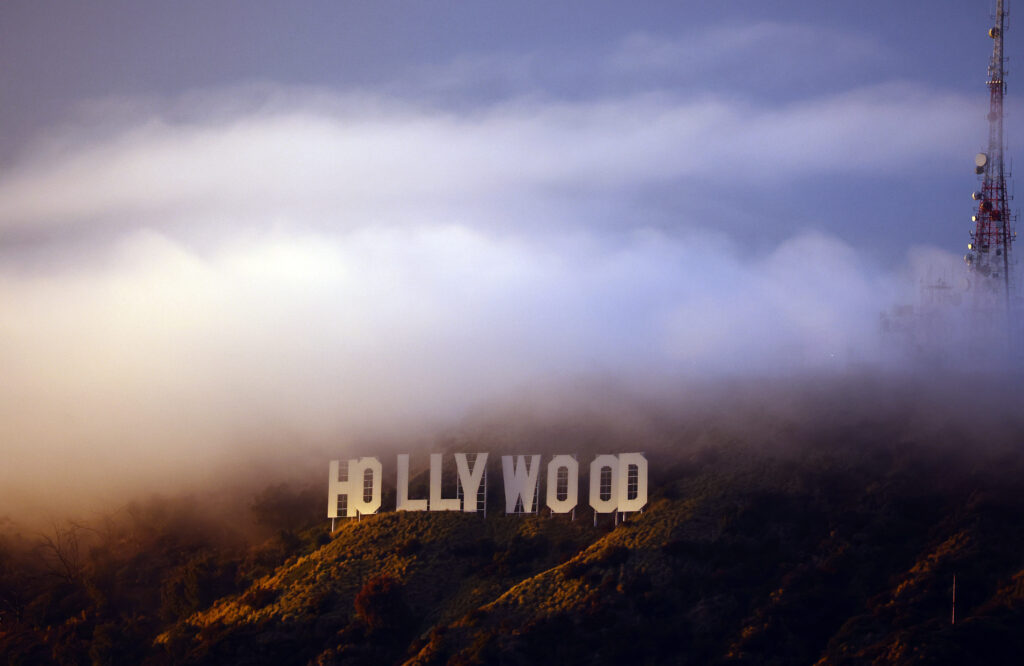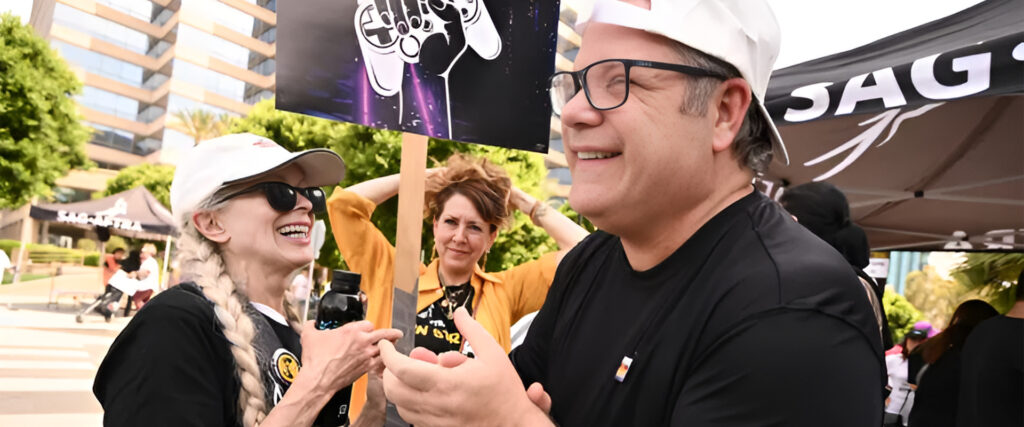Berger’s Oscar Buzz Continues with Conclave, Shot Entirely in Italy
Edward Berger, the acclaimed director of All Quiet on the Western Front, might soon find himself on the Oscar stage again. His latest film, Conclave, based on Robert Harris’s 2016 novel, has been gaining praise globally. This time, we’re not on the trenches of World War II amid terror and explosions, but within the walls of the Vatican, recreated among the staircases of the Reggia di Caserta, the narrow streets of Rome, and the stages of Cinecittà. The story follows the death of the Pope and the secretive election process that takes place as cardinals from around the world gather to choose a new leader.
“I remember seeing a photo of cardinals smoking during the election of Pope Benedict. They all looked like they were conspiring, like one of them could pull out a dagger at any moment,” Berger shared during a presentation in Los Angeles earlier this month. “It felt like something out of ancient Rome, with ambitions, power struggles, and covert meetings. That image stuck with me and perfectly captured the essence of what we wanted to explore in the film—maybe not so far from what politics is everywhere.”
The film’s main character, Cardinal Lawrence, portrayed by Ralph Fiennes, is tasked with the complex responsibility of organizing the voting rounds. “He’s a sort of Vatican manager, a character who is comfortable in the background, orchestrating the whole affair,” Berger noted. In the book, this character is Italian. “But there aren’t many Italians who speak English well enough for this role. When it came to casting, we thought about who could carry the film and speak English fluently. It didn’t take long to settle on Ralph Fiennes, even though the nationality shifted. He had the intensity that we needed; We even managed to have him deliver a few lines in Latin and Italian!”
Even though the choice of the protagonist fell on a fluent-speaking actor, the film features two well-known Italian faces: the domineering and ultra-conservative cardinal portrayed by Sergio Castellitto and Sister Agnes, played by Isabella Rossellini, who oversees the cardinals’ accommodations at Casa Santa Marta, organizing meals and rooms with a dedicated team of sisters from around the world. Rossellini was Berger’s first choice: “She is an absolute icon, and moreover, Italian. We needed that kind of intensity and depth for this crucial role in the narrative. She doesn’t have a lot of lines: like Cardinal Lawrence, Sister Agnes observes, listens, and speaks with her eyes. Much more than Lawrence, she holds her position in the background, behind the scenes.”
The difficulty of making a film set almost entirely within the Sistine Chapel (where the conclaves take place) is that “I don’t think you can pull out your iPhone in the Sistine Chapel. Immediately, the guard comes and puts that phone away. You can’t shoot there. Not even a video to send to your mom. There’s a big white line on St. Peter’s Square, and that white line means do not cross with commercial photography. And so we had to recreate everything.”
Berger shared, “I had all the tours; I went into the Sistine Chapel at 6 a.m., on a back channel tour, so that I was actually alone in the Sistine Chapel with Ralph for like half an hour, looking at it and sort of feeling that place.”
Casa Santa Marta, the hotel structure next to St. Peter’s that houses the cardinals, was also recreated at Cinecittà: “It is quite ugly. Even if they let you shoot in there, you wouldn’t want to. So we had to create a version of it that is slightly pleasing, at least to your taste.”
To capture the essence of that secluded place, separated from the world and marked by absolute and decadent beauty, the production explored a variety of locations, including the streets of Rome and the halls of the Reggia of Caserta: “I’ve never had as many locations as in this movie. We shot all over the place, one day here, one day there, just trying to create the impression of the Vatican or the back doors of the Vatican.”
Share:
Edward Berger, the acclaimed director of All Quiet on the Western Front, might soon find himself on the Oscar stage again. His latest film, Conclave, based on Robert Harris’s 2016 novel, has been gaining praise globally. This time, we’re not on the trenches of World War II amid terror and explosions, but within the walls of the Vatican, recreated among the staircases of the Reggia di Caserta, the narrow streets of Rome, and the stages of Cinecittà. The story follows the death of the Pope and the secretive election process that takes place as cardinals from around the world gather to choose a new leader.
“I remember seeing a photo of cardinals smoking during the election of Pope Benedict. They all looked like they were conspiring, like one of them could pull out a dagger at any moment,” Berger shared during a presentation in Los Angeles earlier this month. “It felt like something out of ancient Rome, with ambitions, power struggles, and covert meetings. That image stuck with me and perfectly captured the essence of what we wanted to explore in the film—maybe not so far from what politics is everywhere.”
The film’s main character, Cardinal Lawrence, portrayed by Ralph Fiennes, is tasked with the complex responsibility of organizing the voting rounds. “He’s a sort of Vatican manager, a character who is comfortable in the background, orchestrating the whole affair,” Berger noted. In the book, this character is Italian. “But there aren’t many Italians who speak English well enough for this role. When it came to casting, we thought about who could carry the film and speak English fluently. It didn’t take long to settle on Ralph Fiennes, even though the nationality shifted. He had the intensity that we needed; We even managed to have him deliver a few lines in Latin and Italian!”
Even though the choice of the protagonist fell on a fluent-speaking actor, the film features two well-known Italian faces: the domineering and ultra-conservative cardinal portrayed by Sergio Castellitto and Sister Agnes, played by Isabella Rossellini, who oversees the cardinals’ accommodations at Casa Santa Marta, organizing meals and rooms with a dedicated team of sisters from around the world. Rossellini was Berger’s first choice: “She is an absolute icon, and moreover, Italian. We needed that kind of intensity and depth for this crucial role in the narrative. She doesn’t have a lot of lines: like Cardinal Lawrence, Sister Agnes observes, listens, and speaks with her eyes. Much more than Lawrence, she holds her position in the background, behind the scenes.”
The difficulty of making a film set almost entirely within the Sistine Chapel (where the conclaves take place) is that “I don’t think you can pull out your iPhone in the Sistine Chapel. Immediately, the guard comes and puts that phone away. You can’t shoot there. Not even a video to send to your mom. There’s a big white line on St. Peter’s Square, and that white line means do not cross with commercial photography. And so we had to recreate everything.”
Berger shared, “I had all the tours; I went into the Sistine Chapel at 6 a.m., on a back channel tour, so that I was actually alone in the Sistine Chapel with Ralph for like half an hour, looking at it and sort of feeling that place.”
Casa Santa Marta, the hotel structure next to St. Peter’s that houses the cardinals, was also recreated at Cinecittà: “It is quite ugly. Even if they let you shoot in there, you wouldn’t want to. So we had to create a version of it that is slightly pleasing, at least to your taste.”
To capture the essence of that secluded place, separated from the world and marked by absolute and decadent beauty, the production explored a variety of locations, including the streets of Rome and the halls of the Reggia of Caserta: “I’ve never had as many locations as in this movie. We shot all over the place, one day here, one day there, just trying to create the impression of the Vatican or the back doors of the Vatican.”









